Gone But Not Forgotten: Emotional Night At Te Waka Toi Awards
Thirteen creatives have been honoured at the biggest awards event in Ngā Toi Māori - with pride, humility and heartbreaking tributes making it an even more special occasion than usual.
Written by
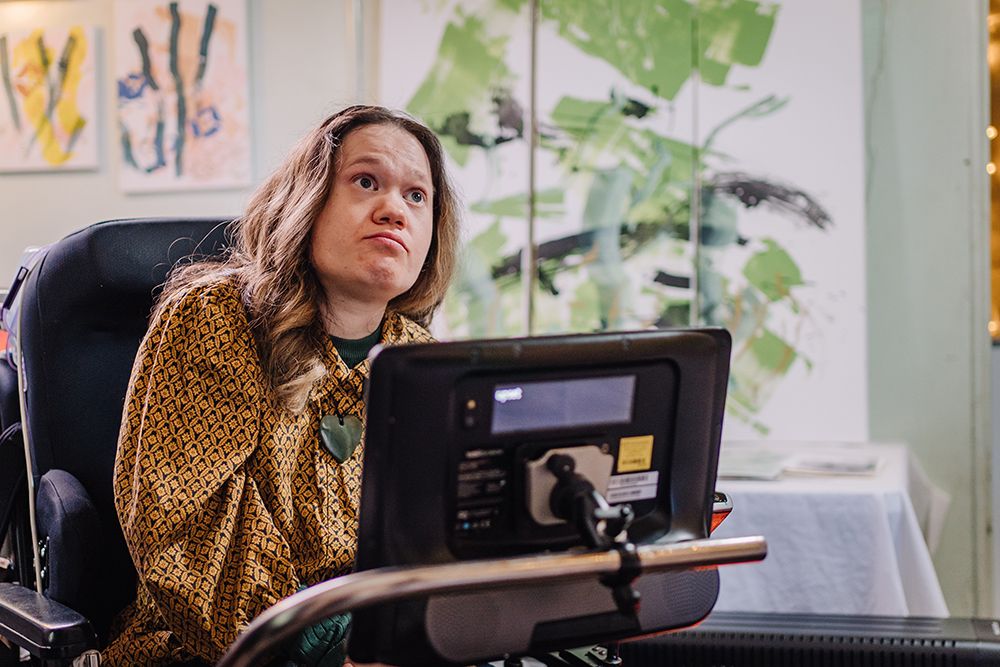
One of the biggest nights in Ngā Toi Māori was one tinged with sadness but driven by celebration and aroha.
Sarah Holten’s artistic excellence was celebrated posthumously at Creative New Zealand's (CNZ) Te Waka Toi Awards - an honour that was meant to be given out in person.
Holten, a mixed-media artist of Ngāti Maniapoto and Tūwharetoa descent, passed away shortly before she was to receive the Te Tohu Iho Pūmanawa award, which recognises the creativity of tangata whaikaha - Māori artists living with disabilities - and their contributions to the arts.
The awards event in Waikato became a touching tribute to Holten’s enduring impact and legacy - after her life was celebrated in Auckland last week by her whānau, friends, mentors and members of the disabled community. They remembered her not only for her significant artistic work but also for her stubborn spirit, which was partly shaped by her battle with Rett syndrome.
Holten’s tenacity, her wit, and her leadership qualities were a force that underpinned her artistic expression.
“Sarah’s journey from a simple pastime to becoming the artist she was always meant to be has been nothing short of inspiring,” said Lisa Holten, her mother, who graciously accepted the award on Sarah’s behalf.
Holten overcame significant physical barriers to produce her art, employing adaptive tools like head pointers and eye gaze technology to craft her unique and powerful visual statements. Her journey as an artist began in her late teens at Māpura Studios, where she was nurtured by her art teacher, Michaela Callaway, who recognised her natural artistic
sense.
Shane Te Ruki, a Creative New Zealand Komiti Māori member, extended sincere condolences to the Holten whānau, acknowledging the void Sarah’s departure has left in the arts community.
Sarah Holten’s story stands as the inspiration of determination and artistic integrity.
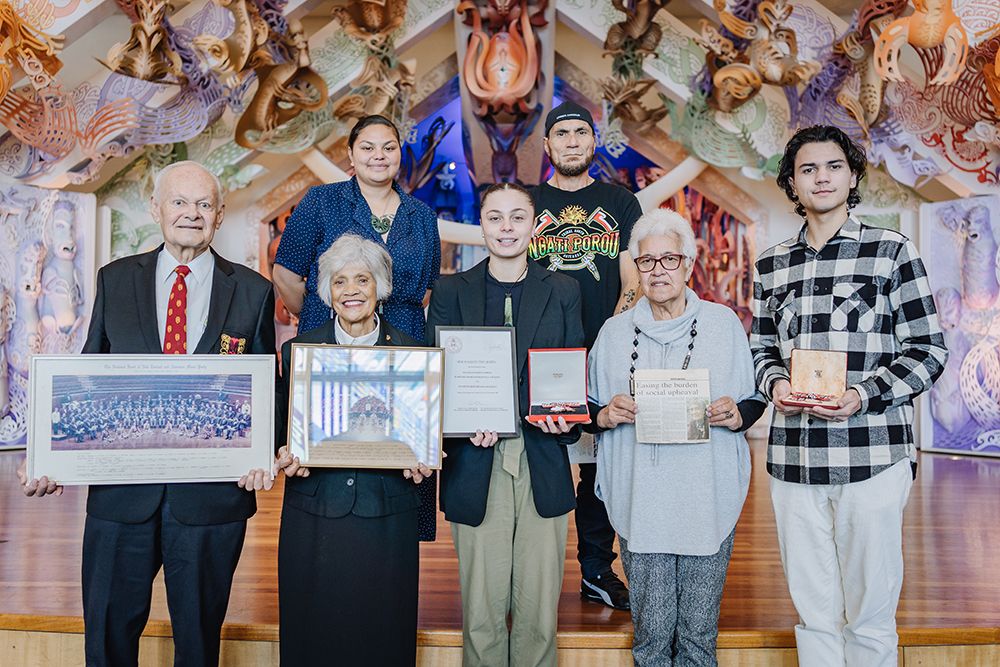
Another heartfelt tribute was given to the late Putiputi Reremoana Mackey QSM (Ngāti Porou ki Poneke), honoured with the prestigious Te Papa Tongarewa Rongomaraeroa Award.
Mackey's selection for this taonga underlines her extraordinary contributions to Māori performing arts and her commitment to te ao Māori.
Her lived experiences and cultural awareness shaped her commitment to preserving and propagating Māori culture, primarily through performing arts. She was a huge contributor to the Ngāti Pōneke cultural club in Wellington, where she helped bring together people and culture.
Bill Nathan, a close friend of Mackey, fondly remembers her as a connector of talent. "She enjoyed connecting people. She was adept at finding the strength of people and engaging with them to contribute to things – she had a real skill at doing this."
Milly Mackey, Putiputi's mokopuna, spoke affectionately of her grandmother's legacy, "Nan's love language was to serve people. Nan was always doing things for other people and Ngāti Poneke; in return, they would do much for us."
Though Mackey passed away in April, her influence endures through her contributions. Her legacy is vividly exemplified as her two grandchildren proudly received the Te Papa Tongarewa Rongomaraeroa Award on her behalf, “Nan lives on through us and her work."
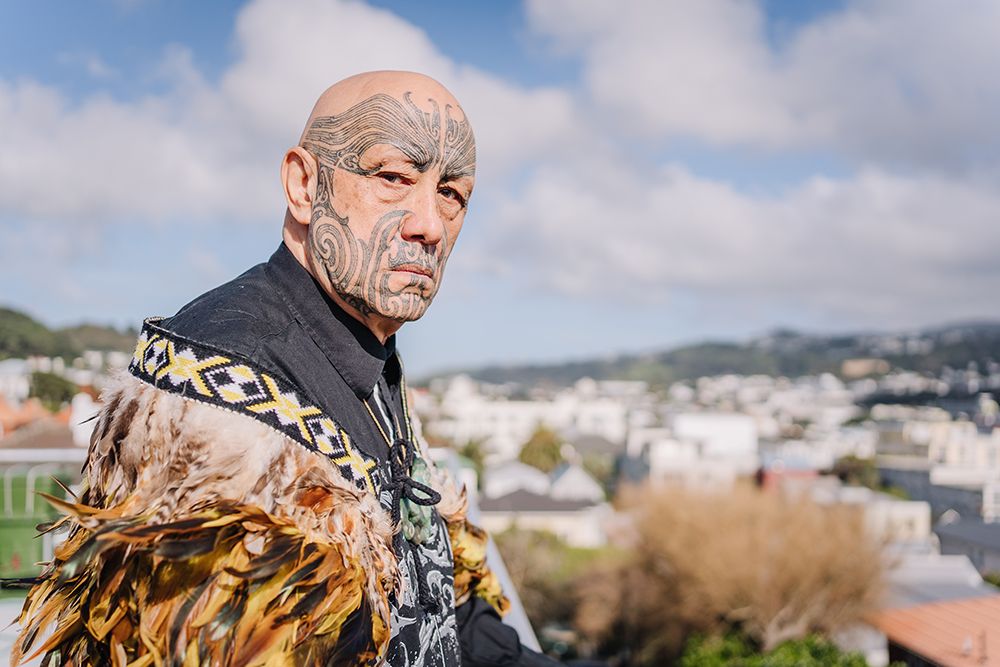
The big award of the night went to renowned actor and storyteller Rangimoana Taylor (Ngāti Porou, Te Whānau ā Apanui), accepting what CNZ describes as the highest honour in Māori art - the Te Tohu Aroha mō Te Arikinui Dame Te Atairangikaahu supreme award, which recognises significant contributions to Māori arts and culture in New Zealand.
More than 35 years into his stellar career which has seen him excel both nationally and overseas, Taylor has shone brightly both on-screen (like in 2011 movie Hook Line and Sinker) and behind the scenes, where he has shared his knowledge as a teacher at Toi Whakaari, New Zealand Drama School and a Takitimu Performing Arts School lecturer. He's also worked as an actor, director, and advisor in television and film.
Taylor's commitment to Māori education is seen in his writing, focusing on helping young Māori. He has also written children's stories and contributed to Schools Broadcasting on Radio. Reflecting on his journey, Rangimoana Taylor says, "It wasn't just about acting. It was about helping young Māori find themselves, find what they want to do, and theatre can help them get there."
Taylor's impact echoes that of many former recipients - including Dame Robin White (2022), who emphasised celebrating Māori culture and Darcy Nicholas (2013), who envisioned a future for young Māori in theatre.
Other with lasting legacies were also put in the spotlight, with the Ngā Tohu ā Tā Kingi Ihaka | Sir Kingi Ihaka Awards for Lifetime Achievement bringing two wāhine toa to the forefront.
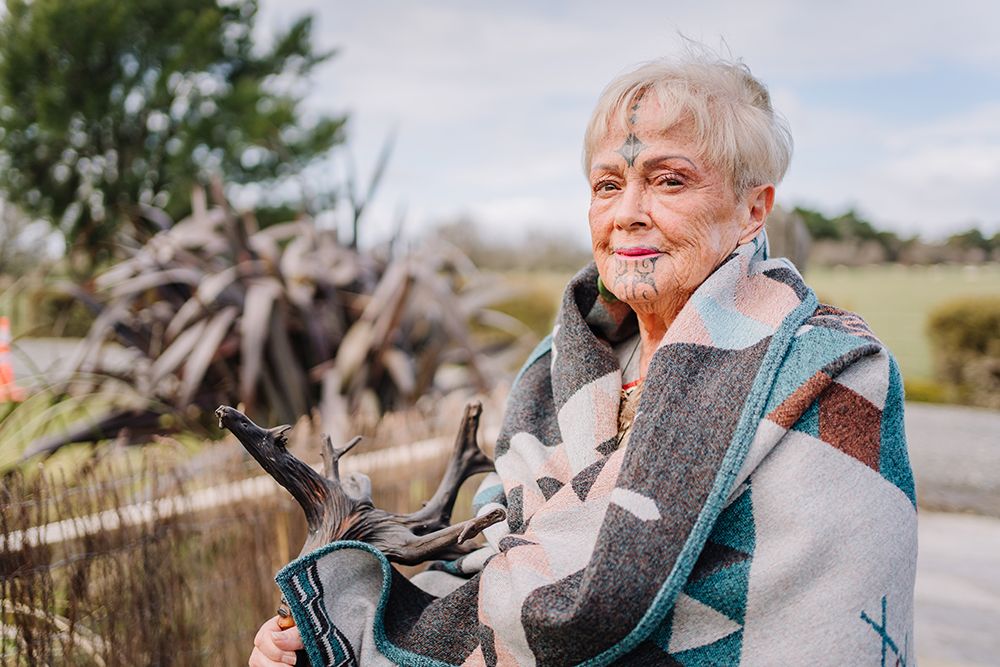
Karanga specialist and educator Te Raina Ferris (Ngāti Kahungunu, Ngāti Raukawa, Ngāti Māmoe, Kāi Tahu, Italy), has been celebrated for her expertise in haka and karanga.
Her journey began in the 1970s when she joined Tamatea Arikinui and participated in over 30 Te Matatini competitions. In 2000, Ferris began teaching karanga to a new generation of women. Her legacy continues today as she and her daughters Helena, Miriama, and Piri teach karanga at their family retreat centre, Kurawaka.
Reflecting on her journey, Ferris humbly remembers, "I was put out as a kaikaranga on the marae when I was 17. I was told what to say, and away I went, and it grew from there. By the time you step out into your adult life, you've got confidence, and I know my confidence came from my upbringing on the marae."
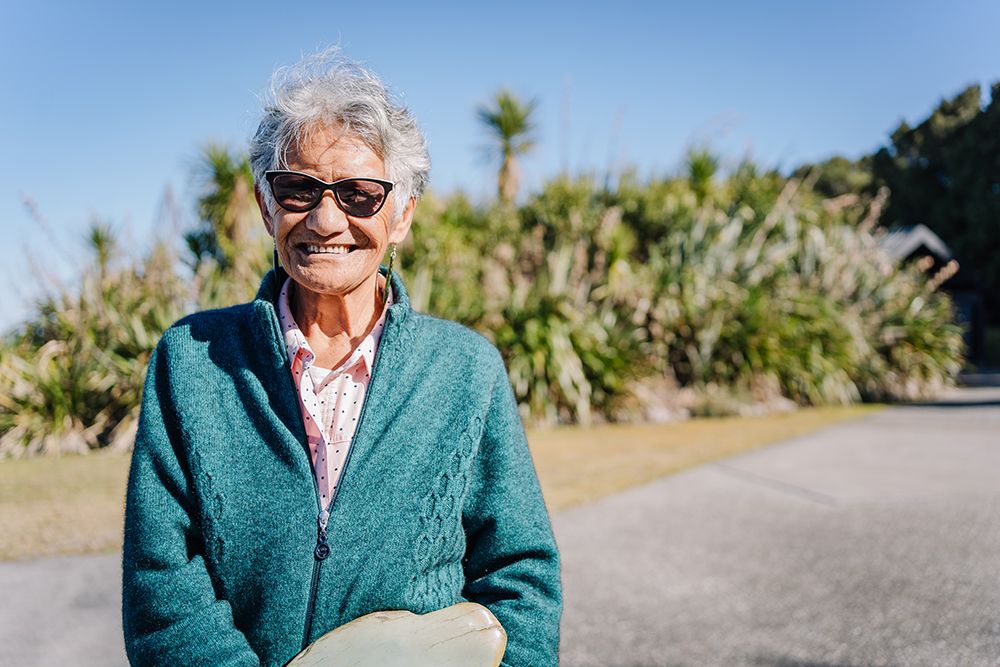
Pounamu Advocate and Cultural Ambassador Horiana Tootell (Ngāti Waewae, Ngāi Tahu) is a devoted guardian of pounamu in the Arahura Valley. She and her family have dedicated their life to protecting this precious resource.
Her advocacy for pounamu extends beyond the West Coast. She shares its cultural significance through storytelling and hosts visitors to experience its power. She has also represented her people's stories at the World Expo in Japan.
Her commitment to preserving traditional knowledge is staunch. She encourages the next generation to continue her legacy as one of the few remaining custodians who possess the knowledge and songs of our pounamu.
One of Aotearoa's most celebrated street artists was also acknowledged, with multi-disciplinary designer Mr G - AKA Graeme Hoete (Ngāi Te Rangi, Ngāti Ranginui me Ngāti Awa) given the Te Tohu Aroha mō Ngoi Kumeroa Pewhairangi award by Te Taura Whiri i te Reo Māori for his contributions to art and culture.
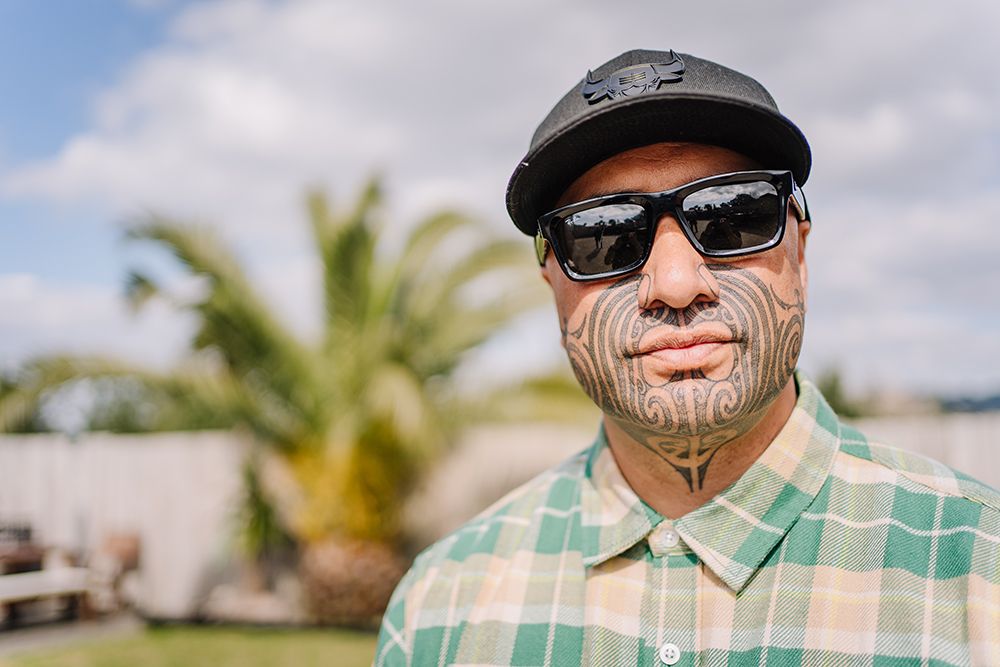
Mr G, whose artistic journey began in the Bay of Plenty, has become renowned for his awe-inspiring photo-realistic murals that have graced cities worldwide. Notable among his creations are the striking mural of Prince in Prince's hometown of Minneapolis and the captivating mural of Steven Adams in Oklahoma City.
Despite having no formal training beyond high school, Mr. G's self-taught talent has captured the hearts of many. Mr G's artistic calling goes beyond the paintbrush, as he shared, "As a ringatoi, I don’t see it as a job or career primarily, I see it as a calling that changes the whole āhua and tūāpapa of what I do.
"Toi has given me hope, even through my darkest times. So, as a ringatoi, if I can inspire other people to have hope, I’ve achieved my purpose and answered my calling."
Mr G believes in the power of art to uplift and inspire, particularly among young people. His work, deeply rooted in the Tūmanako kaupapa, weaves stories of hope, hītori, and pūrākau, offering encouragement and strength to those who encounter his murals.
"One cool aspect about these murals is it’s an opportunity to be able to re-indigenise the spatial narratives in these small towns, which has a vital role in our hauora," Mr G noted, highlighting the cultural significance of his creations in
enriching the communities where they reside.
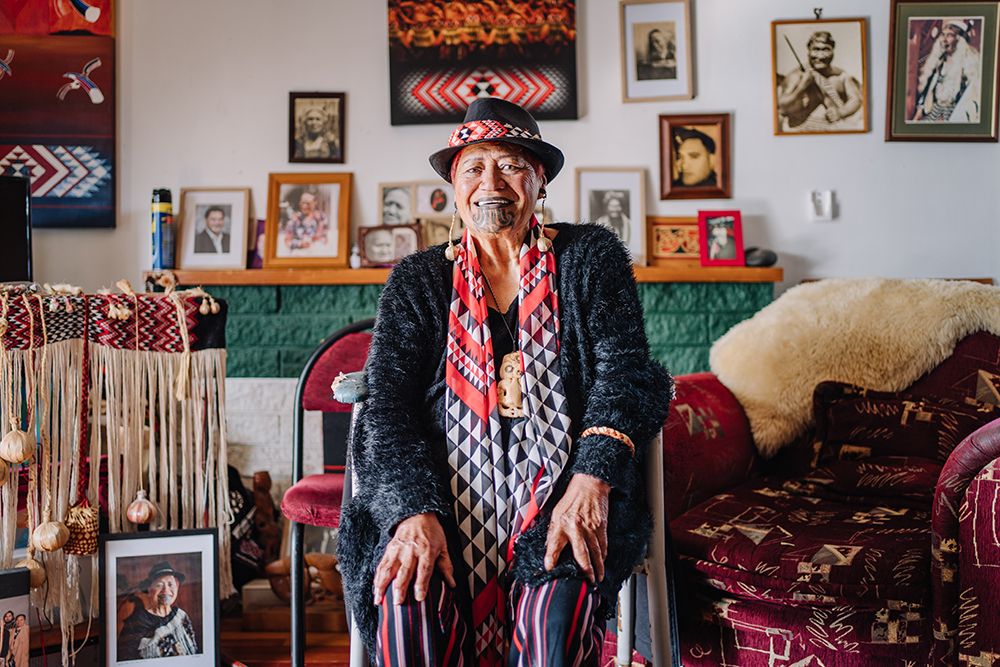
Another who invests their time in preserving Māori culture was announces as the recipient of the esteemed Te Tohu Whakamanawa o Te Matatini awards for 2023, honouring individuals whose contributions have
significantly impacted Māori culture and the performing arts, enriching the cultural tapestry of Aotearoa.
Ngamoni Huata (Tūhourangi-Ngāti Wahiao, Ngāti Whare, Ngāi Tuhoe, Te Whakatōhea, Ngāti Raukawa), affectionately recognised as Aotearoa’s most published expert on poi, represents a rich history of mātauranga from her upbringing at Te Pakira Marae, where she makes poi with her whānau.
"The poi was a toy for us, something to play with and show off to ourselves." She describes the symbiotic relationship be
tween tourism and the preservation of traditional arts and crafts, emphasising, "Tourism helps retain our arts and crafts and the life of performing arts."
As a judge at Te Matatini, Huata brings her wealth of expertise to the forefront, further enriching the cultural landscape of Aotearoa. Her lifelong dedication to poi and cultural preservation shines inspiration to all.
Over the years, she has crafted numerous cloaks, some gracing the shoulders of distinguished Māori and Pākehā dignitaries. This rangatira embodies the essence of Te Tohu Whakamanawa o Te Matatini, celebrating and perpetuating the traditions and arts of te ao Māori for generations to come.
At the other end of the experience scale - the Ngā Manu Pīrere Awards recognise emerging artists with promise and dedication in their chosen art forms.
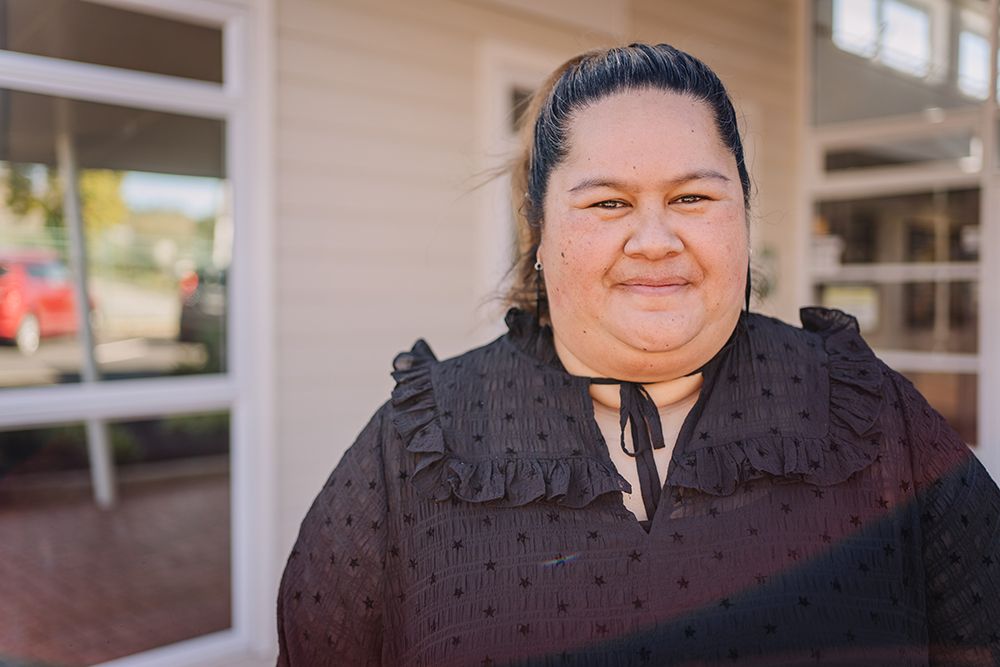
Māori writer and Kaipara College Assistant Principal Brianne Te Paa (Ngāti Kahu, Ngāpuhi, Te Rarawa, Ngāti Whātua, Ngāti Tūwharetoa, Te Aitanga-a-Māhaki, Te Whānau-a-Apanui) has long had a passion for working with young people.
Te Paa's Māori edition book received the Storylines Te Kahurangi Kāterina Te Heikōkō Mataira Award and was named in the Storylines Notable Book List in 2022. The English edition was recognised as the NZ Booklovers Best Children's Picture Book in 2023 and made the Storylines Notable Book List in 2022. Both editions are finalists in the 2023 New Zealand Book Awards for Children and Young Adults.
Te Paa says "Ever since I was in primary school, I loved reading and writing poems and had amazing teachers who
encouraged me to pursue writing."
Her inspirational journey began with a wānanga reo attended by Professor Rangi Mātāmua, where she was inspired to write a poem titled How my koro became a star. This poem has since gone viral and is a valuable resource for teachers and schools to learn about Matariki.
Te Paa was featured in The Big Idea's NZ On Air Public Interest journalism-funded story on rising Māori talent.
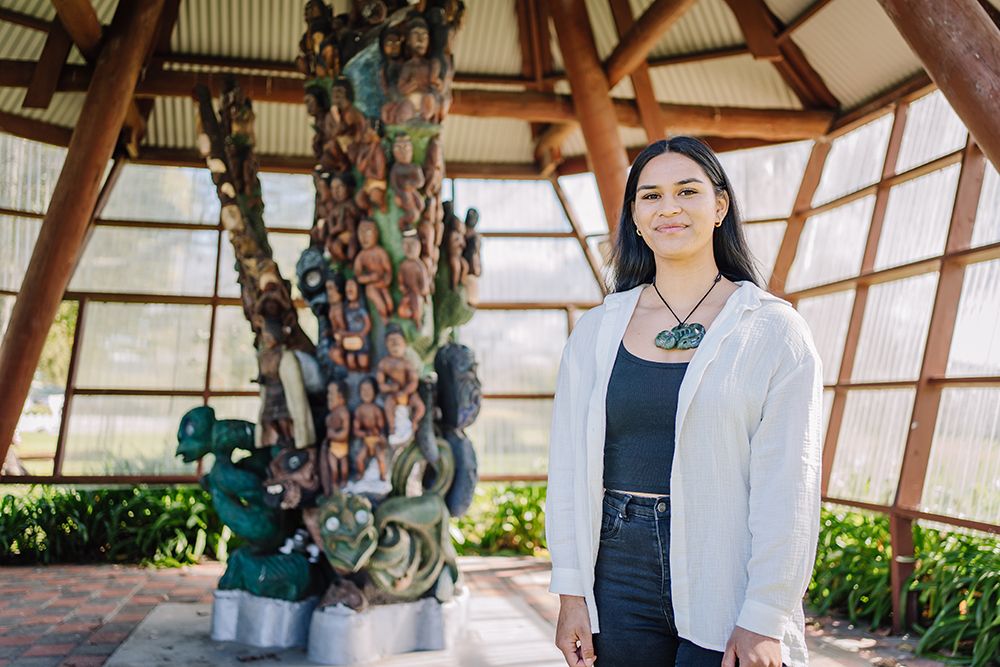
Visual artist Bridy Lundon (Ngāpuhi, Waikato-Tainui) received the Ruanuku Award, presented annually to the top all-round student at Toihoukura. Lundon's artistic focus centres on the revival, reclamation, and rebuilding of traditional and contemporary art forms in the modern world. She aims to decolonise the minds of her generation and re-indigenize their thought patterns, emphasising the significance of Māori language and culture.
“I love all forms of art, I see this space as a huge opportunity to showcase and breathe life into the Māori culture”. Lundon dedicates a significant portion of her work to the community and strives to create a space where tauira Māori feel comfortable expressing kōrero and exploring various art practices through a Māori lens.
Tuakoi Ohia (Ngāi Te Rangi, Ngāti Pūkenga, Ngāti Hine, Te Ati Awa, Tainui, Te Arawa, Ngāti Pākehā) is making a name for herself in the world of performing arts and theatre.

Ohia brings her rich upbringing in te ao Māori, her reo, and her whakapapa into her art form with grace and knowledge. She is helping the art world understand how mātauranga Māori can flourish to create mātauranga.
Ohia co-wrote the play Kōpū with Tuki Tukiwaho, showcasing her mana as a wahine Māori and her deep understanding of mātauranga Māori. Born in Hamilton, her journey into theatre began when she auditioned for Black Ties, where she met Tainui Tukiwaho, and her career took a remarkable turn.
Tukiwaho's long-time creative collaborator and Kaupapa Māori-focused producer Amber Curreen (Ngāpuhi) was also recognised as one of three recipients of the Ngā Tohu Hautūtanga Auaha Toi Making a Difference Award.
Curreen has been delivering professional theatre since 2009 with Te Rēhia Theatre Company and Te Pou Theatre Trust, driven by a solid tikanga-based arts practice and focuses on high-quality, innovative story-telling that brings te reo Māori to the stage and supports the reclamation and revitalisation of Mātauranga Māori through the arts.
Like Curren, fellow recipient Estella Hineratia Tawha-Davis (Ngaati Maahanga, Waikato-Tainui, Ngaati Raukawa, Ngaati Maiotaki, Ngaati Toarangatira) wears a lot of hats - Director/Kaitukuhaumanu/Counsellor/Kapa Haka Kaiako/Tutor.
Tawha-Davis is dedicated to her people's revitalisation, reclamation and long-term healing, specifically focusing on rangatahi. Her kaupapa Kapa Haumanu is innovative and challenging, broadening perceptions of ngā toi Māori as it is the only kaupapa of its kind, and has been working alongside kura from Whakatuu since 2019.
Architectural Visual and Tā Moko artist Graham Tipene (Ngāti Whātua, Ngāti Kahu, Ngāti Haua, Ngāti Manu) has been a consultant and critical artist on civic and Council-led projects throughout Tāmaki Makaurau. His public work brings Māori kaupapa into the city's built environment, with significant projects including the Waterview tunnel, Victoria Park, Auckland Library, and Tirohanga Whānui Bridge in Albany.